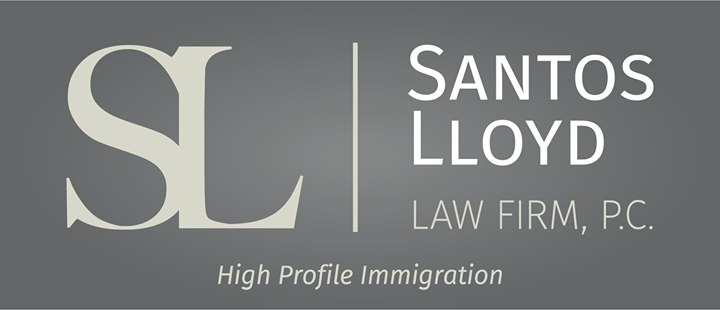El cambio en la política de género del USCIS preocupa a los solicitantes de asilo por motivos de identidad de género
Click here to read this article in English
El 31 de marzo de 2025, el Servicio de Ciudadanía e Inmigración de Estados Unidos (USCIS) implementó una actualización de política que limita las selecciones de marcador de género en todos los formularios y sistemas de inmigración a dos sexos biológicos: masculino y femenino. Este cambio elimina la opción de que los solicitantes seleccionen un marcador de género no binario o «X», una opción que antes se permitía en algunos formularios.
Si bien USCIS hace hincapié en que esta actualización no cambia quién califica para los beneficios de inmigración, puede afectar significativamente la forma en que ciertas solicitudes - en particular las solicitudes de asilo basadas en la persecución relacionada con la identidad de género - se entienden y evalúan.
¿Qué ha cambiado?
Con arreglo a la nueva política, los solicitantes sólo podrán elegir «masculino» o «femenino» al cumplimentar los formularios del USCIS. La posibilidad de seleccionar una opción no binaria o de tercer género ya no está disponible.
Los solicitantes todavía pueden pedir cambiar su marcador de género con USCIS, pero sólo dentro del binario masculino/femenino. No se requiere documentación de apoyo, como registros médicos o legales, para realizar el cambio. Esto significa que las personas transgénero aún pueden alinear su marcador de género con su identidad -si entra dentro de las dos categorías binarias-, pero las personas no binarias ya no están representadas.
El cambio se produce a raíz de las orientaciones publicadas por la Oficina Federal de Gestión y Presupuesto (OMB por sus siglas en inglés), que pedía una mayor coherencia en la recogida de datos sobre sexo y género en todos los organismos federales.
Impacto en los solicitantes de asilo
Esta actualización de la política es especialmente importante para las personas que solicitan asilo por persecución relacionada con su identidad de género. Según la ley de inmigración estadounidense, pueden solicitar asilo las personas que hayan sufrido persecución -o teman sufrirla en el futuro- por pertenecer a un «grupo social determinado». Esto incluye a las personas perseguidas por ser transexuales, no conformistas con su género o por no ajustarse a los roles de género socialmente esperados en su país de origen.
Aunque la norma jurídica para el asilo no cambia, la eliminación del marcador de género no binario podría dificultar a algunos solicitantes la presentación y documentación claras de su identidad. En los casos de asilo, la credibilidad y la claridad son cruciales. La capacidad de reflejar con precisión la propia identidad de género en los formularios oficiales puede desempeñar un papel importante a la hora de establecer los fundamentos de una solicitud de persecución.
Ahora, los solicitantes que se identifican como no binarios o fuera de las categorías tradicionales masculino/femenino pueden verse obligados a seleccionar un género que no se ajusta a su experiencia vivida. Esto podría dar lugar a confusión en su expediente o requerir explicaciones adicionales durante las entrevistas o audiencias. Esta política podría debilitar la solidez de algunas solicitudes de asilo, no porque los hechos subyacentes hayan cambiado, sino porque ahora los formularios oficiales no reflejan la verdadera identidad del solicitante.
Por ejemplo:
- Una persona no binaria que solicita asilo tras haber sido perseguida en su país de origen puede tener que seleccionar «Hombre» o «Mujer» en su solicitud de asilo, a pesar de no identificarse como ninguno de los dos.
- Este desajuste puede llevar a los adjudicadores a cuestionar la identidad del solicitante, lo que posiblemente debilite la solidez de la solicitud o exija aclaraciones y documentación adicionales.
- En los casos de asilo defensivo, en los que los solicitantes se encuentran en proceso de expulsión, estas incoherencias pueden crear obstáculos innecesarios y complicar la presentación de pruebas.
¿Qué pueden hacer los solicitantes?
A pesar del cambio, las personas pueden seguir solicitando asilo por motivos de identidad de género. Los criterios de elegibilidad subyacentes siguen siendo los mismos. Sin embargo, los solicitantes deben estar preparados para explicar claramente cualquier diferencia entre su identidad declarada y el marcador de género requerido en los formularios de USCIS.
Se recomienda a los solicitantes que:
- Incluir una declaración personal explicando detalladamente su identidad de género y cómo se relaciona con su temor de persecución.
- Aportar pruebas como declaraciones juradas, informes sobre el estado del país o testimonios de expertos que respalden la solicitud.
- Trabajar con un abogado de inmigración con experiencia que pueda ayudar a presentar la solicitud de manera eficaz y prepararse para cualquier pregunta que pueda surgir de las nuevas limitaciones del formulario.
La nueva política del USCIS sobre los marcadores de género puede parecer una actualización técnica, pero para los solicitantes de asilo que huyen de la persecución por motivos de género, tiene implicaciones reales. Aunque las personas siguen cumpliendo los requisitos legales para solicitar protección, la limitación a las opciones binarias de género podría dificultar la presentación completa y clara de su caso.
Si usted o alguien que usted conoce está enfrentando desafíos de inmigración relacionados con la identidad de género - o está preocupado acerca de cómo esta política puede afectar una solicitud de asilo - por favor póngase en contacto con Santos Lloyd Law Firm para programar una consulta con uno de nuestros abogados de inmigración con experiencia. Estamos aquí para ayudar a asegurar que su voz sea escuchada y su caso sea manejado con el cuidado y la experiencia que se merece.
Ce blog n'est pas destiné à fournir des conseils juridiques et rien ici ne doit être interprété comme établissant une relation avocat-client. Veuillez prendre rendez-vous avec un avocat spécialisé en droit de l'immigration avant d'agir sur la base de toute information lue ici.






